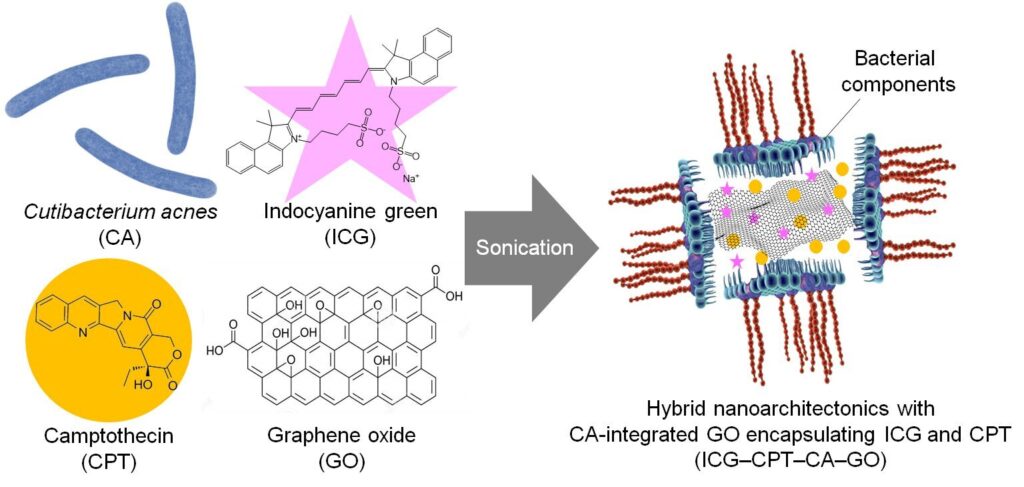Modern cancer treatments have evolved beyond traditional chemotherapy to include targeted approaches such as immunotherapy, radiation therapy, and photothermal therapy. Graphene oxide (GO), known for its biocompatibility, high photothermal conversion efficiency, and large surface area, has emerged as a promising material for both drug delivery and thermal-based tumor destruction. However, its clinical application remains limited due to challenges in dispersibility and large-scale production.
To overcome these limitations, Professor Eijiro Miyako and his research team from the Japan Advanced Institute of Science and Technology (JAIST) have developed a novel GO nanocomposite enhanced with bacterial components. The paper was made available online on March 21, 2025, in the journal Carbon.
The study highlights how bacterial properties improve GO’s effectiveness in cancer therapy. Certain bacteria naturally stimulate immune responses and enhance dispersibility of GO due to their amphiphilic cellular components.
Using this concept, the researchers designed a GO-based nanocomposite containing Cutibacterium acnes (CA) bacterial components and the chemotherapy drug camptothecin (CPT). These nanoparticles eradicate tumors through a three-pronged mechanism: bacterial components activate the immune system, CPT delivers localized chemotherapy, and GO facilitates photothermal therapy.
“CPT delivers localized chemotherapy, GO intensifies heat-based tumor destruction, and CA components activate immune defenses. Together, these effects provide a highly promising cancer treatment,” explains Dr. Miyako.
The nanocomposites were prepared by sonicating a mixture of GO, CA bacterial components, and CPT in a cell culture medium. The resulting particles, averaging 53 nm in size, were stabilized by a bacterial coating, improving their dispersibility and biological compatibility.
When injected into mice with colorectal cancer, the nanoparticles preferentially accumulated in tumors while sparing other organs due to the enhanced permeability and retention effect. Even without laser activation, they effectively suppressed tumor growth by leveraging the combined effects of chemotherapy and immune activation.
Further enhancing treatment efficacy, the researchers applied a low-power laser (0.8 W) for five minutes, heating the tumors to 50°C—enough to destroy cancer cells without harming healthy tissue. After five laser treatments, the mice showed complete tumor eradication and full recovery.
Analysis using qPCR confirmed that immune cells, including T cells, B cells, neutrophils, macrophages, and natural killer cells, were activated, demonstrating a strong immune response driven by CA components.
Unlike conventional GO modification methods, which involve complex chemical processing, this bacterial-based approach offers a cost-effective and scalable alternative. “Cancer is a highly progressive and complex disease, requiring a multidimensional approach to fight it,” says Dr. Miyako. “The proposed approach is cost-effective, requires minimal resources, such as bacterial culture media, and is easily scalable for mass production via a simple single-step sonication process.”
This study presents a promising strategy for enhancing GO-based cancer therapies, providing a simple and scalable method for developing multifunctional nanoparticles with potent anti-cancer effects.


